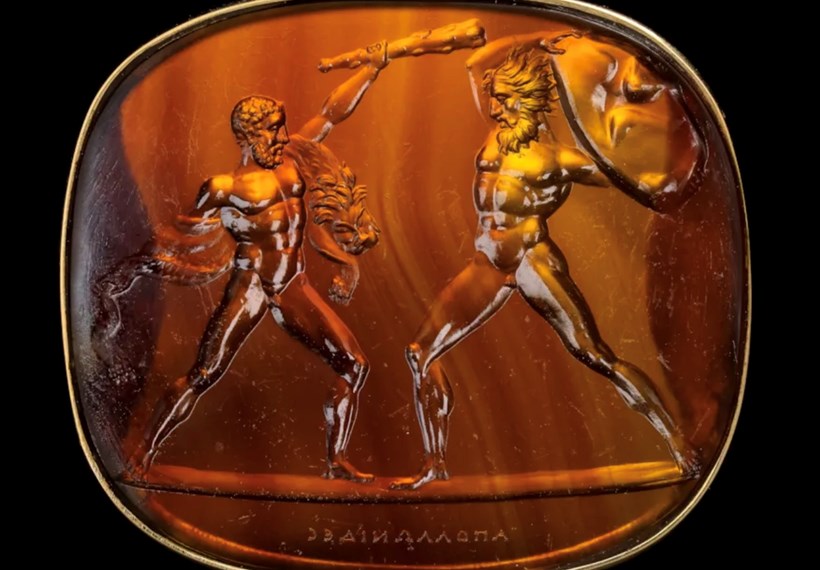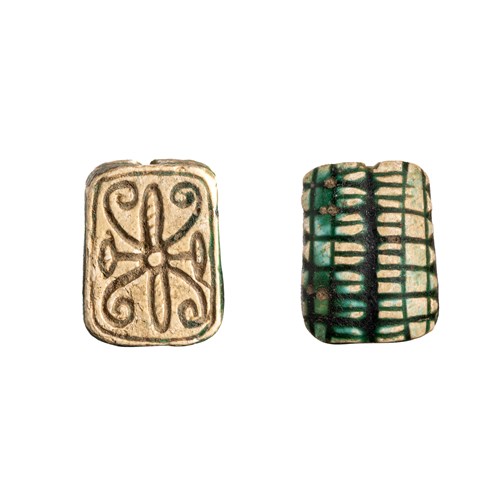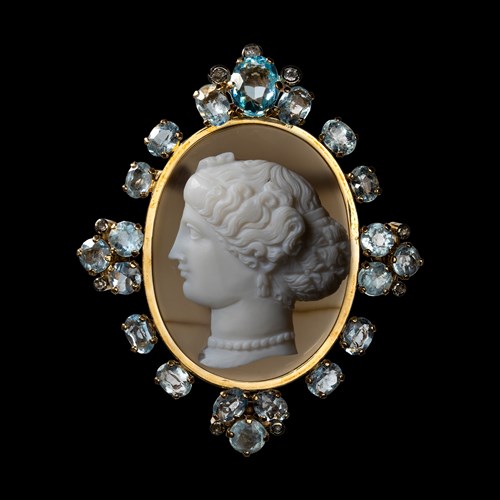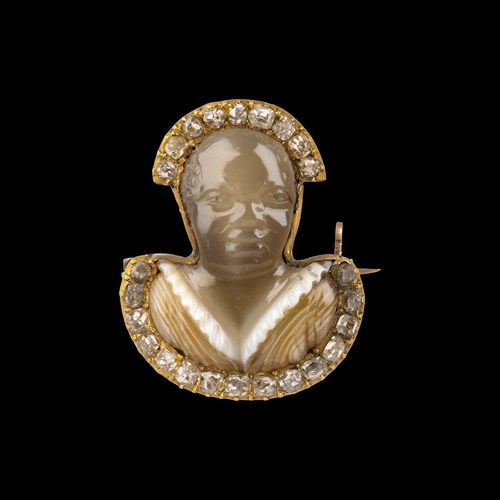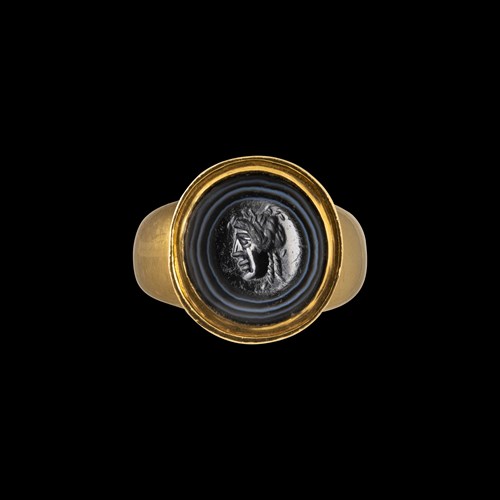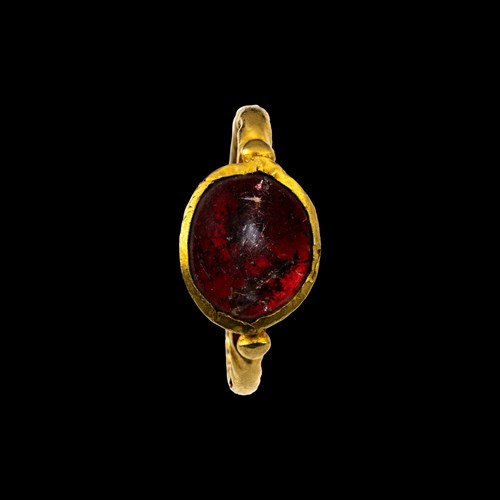Marketplace
An Etruscan Revival gold ring set with a swivel carnelian scarab. Hercules.
An Etruscan Revival gold ring set with a swivel carnelian scarab. Hercules.
Epoque 19th century
Origine STOCK, London
Medium gold, Carnelian, or, cornaline
Dimension 1.6 x 1.2 x 0.9 cm (0⁵/₈ x 0¹/₂ x 0³/₈ inches)
This beautiful example of Etruscan Revival jewelry in the manner of the Castellani workshop is formed by a gold oval bezel with a frame adorned of spherical beads and twisted wires surmounted by a beautiful engraved carnelian scarab with stylized features on the back and pierced lenghtwise.
A gold pin is holding the scarab and attached on each side by a double hoop.
On the reverse, is figured the mythical hero, Hercules, depicted naked, holding the club on his left hand, and the lion skin on the right arm. Hatched border.
This swivel gold box setting was probably part of a brooch or a bracelet and converted as a ring in the Victorian era.
This set is directly inspired by the Classical Etruscan jewellery from the 5th-4th century BCE.
During the Grand Tour era and later in the 19th century, the discovery of these ancient treasures initiated the appearance of new trends in jewellery and the great Italian goldsmiths such as Giuliano and Castellani then, took on the challenge of reproducing ancient techniques and creating new jewelry directly inspired by these ancient models. At the same time, other European artists, particularly the English, embraced this fashion, and antique-inspired jewelry quickly became fashionable. A trend already initiated by Napoleon's campaigns in Egypt (1798-1801), and the taste for the Egypt Revival in goldsmithing as well as in fashion and architecture.
A gold pin is holding the scarab and attached on each side by a double hoop.
On the reverse, is figured the mythical hero, Hercules, depicted naked, holding the club on his left hand, and the lion skin on the right arm. Hatched border.
This swivel gold box setting was probably part of a brooch or a bracelet and converted as a ring in the Victorian era.
This set is directly inspired by the Classical Etruscan jewellery from the 5th-4th century BCE.
During the Grand Tour era and later in the 19th century, the discovery of these ancient treasures initiated the appearance of new trends in jewellery and the great Italian goldsmiths such as Giuliano and Castellani then, took on the challenge of reproducing ancient techniques and creating new jewelry directly inspired by these ancient models. At the same time, other European artists, particularly the English, embraced this fashion, and antique-inspired jewelry quickly became fashionable. A trend already initiated by Napoleon's campaigns in Egypt (1798-1801), and the taste for the Egypt Revival in goldsmithing as well as in fashion and architecture.
Epoque: 19th century
Origine: STOCK, London
Medium: gold, Carnelian, or, cornaline
Dimension: 1.6 x 1.2 x 0.9 cm (0⁵/₈ x 0¹/₂ x 0³/₈ inches)
Plus d'œuvres d'art de la Galerie



